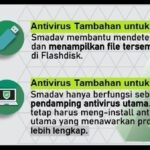The world of radio scanning offers a unique window into various slices of life, and for some enthusiasts, the mundane yet surprisingly captivating realm of fast food drive-through communications holds a particular fascination. You might ask, “Why would anyone be interested in listening to fast food orders?” It’s a valid question, often met with skepticism from those unfamiliar with the scanner hobby. However, for those in the know, tuning into the chatter of drive-through employees offers a blend of entertainment, insight, and a peculiar form of social observation.
One of the primary draws is the sheer practicality it can offer in real-time. Imagine pulling up to your favorite fast food establishment and being able to understand the order-taking process from the inside out. This isn’t about some futuristic concept where Fast Food Drive Throughs Scan Cars As Payment, but rather a more down-to-earth, auditory experience. Listeners can often discern order clarifications, ensuring accuracy even before they reach the ordering speaker. This preemptive awareness can save time and frustration, especially during peak hours.
Beyond personal order accuracy, scanning drive-throughs provides a behind-the-scenes glimpse into the often chaotic world of fast food service. You become privy to the internal communications – the whispered questions between employees when an order is unclear, the corrections made in real-time, and the general hustle of a busy kitchen. This eavesdropping offers a unique form of transparency. You know when you might need to double-check your order at the window, based on the internal confusion you’ve overheard.
The scanner also acts as an early warning system regarding service quality. Employees may discuss issues with food preparation or service delays amongst themselves. By listening in, you can get a sense of whether you might be about to experience a problem, potentially allowing you to adjust your expectations or even decide to dine in instead of using the drive-through.
Further adding to the appeal is the unintentional comedy and candid moments captured through these open channels. Drive-through employees, often working under pressure, engage in informal chatter, share jokes, and discuss customer interactions, sometimes including complaints or humorous anecdotes about particularly demanding or unusual orders. Listening to these interactions can be akin to tuning into a real-life, unscripted sitcom, offering moments of levity and relatable human experience. The sheer variety of customer requests, from the incredibly specific to the bewilderingly strange, can be genuinely entertaining. For the scanner enthusiast, it’s a constant stream of everyday human interactions, unfiltered and unedited.
Moreover, scanners provide practical information beyond just entertainment. Hearing employees communicate about sold-out items or the last available portions of a popular dish allows listeners to make informed decisions about their orders in real-time. You might hear “last one” called out and seize the opportunity to order it, or conversely, learn that your favorite item is unavailable, saving you from disappointment at the ordering screen.
In a similar vein, scanning can give you a sense of wait times. By listening to the flow of orders and internal discussions about delays, you can gauge whether the line is likely to be long and slow. This preemptive information can be invaluable – allowing you to decide whether to persevere with the drive-through or perhaps park and go inside, or even choose a different dining option altogether.
For some, the fascination extends to the social observation aspect. Listening to the orders placed by others offers a glimpse into the diverse tastes and sometimes peculiar preferences of the general public. You might overhear incredibly complex and customized orders, prompting a mix of amusement and sympathy for the drive-through staff tasked with fulfilling them. This aspect taps into a sense of shared human experience and the often-quirky nature of everyday life.
Historically, for those with two-way radios, drive-through channels offered a convenient and sometimes clearer way to communicate orders, especially in situations like inclement weather where shouting at an intercom in the rain was less than ideal. While this direct communication method might be less common now, the underlying appeal of direct, real-time communication remains a part of the scanner hobby’s allure.
Finally, for some, the interest may have personal roots. Imagine having a friend or partner working at a drive-through. Scanning their channel allows you to hear their voice throughout the day and gain a sense of their work environment. While this can border on personal interest, it highlights the human connection aspect that even seemingly mundane communications can provide.
Ultimately, the appeal of scanning fast food drive-through communications is multifaceted. It’s a blend of practical utility, entertainment value, social observation, and a touch of the voyeuristic curiosity that drives many scanner enthusiasts. It’s about tuning into the everyday, finding the interesting in the ordinary, and gaining a unique perspective on the world around us, one drive-through order at a time. While it might not be about futuristic payment methods or scanning cars as payment, it’s a fascinating glimpse into a very real and often overlooked aspect of modern life.

